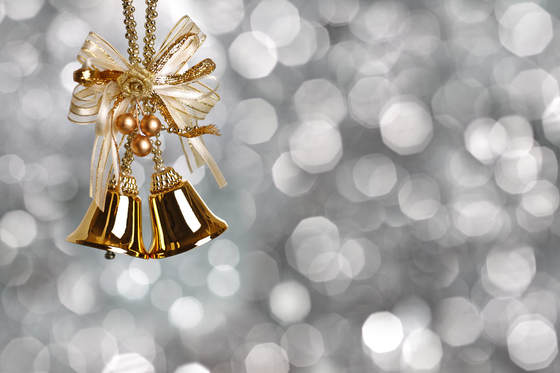Though it is closely associated with Christmas, the origins of the song are connected to the new year. But, then, it’s not even the New Year that we know of as 1 January. Nope. The song goes farther back, into pre-Christian Ukraine. We need to look at the opening phrase: Hark how the bells, sweet silver bells, all seem to say throw cares away. Those four notes repeated over and over may be a chant that had connections to new year celebrations that took place in the spring, probably in April. The original text tells the story of a swallow that comes to a farmer and tells him that spring has arrived and that prosperity and a lovely wife are just around the corner.
Then, Christianity struck Ukraine, and with it the Julian calendar. New Year was moved to 13 January (1 January by the Gregorian calendar that we use), when it is still celebrated in Ukraine. At this time, children travel door-to-door singing this song. The song promises a bountiful year, and the kids are rewarded with baked treats. In Ukraine, the song is called Shchedryk, which roughly translates to “Bountiful:”
Shchedryk, shchedryk, a shchedrivka [New Year's carol];
A little swallow flew [into the household]
and started to twitter,
to summon the master:
"Come out, come out, O master [of the household],
look at the sheep pen,
there the ewes have yeaned
and the lambkins have been born
Your goods [livestock] are great,
you will have a lot of money, [by selling them].
If not money, then chaff: [from all the grain you will harvest]
you have a dark-eyebrowed [beautiful] wife."
Shchedryk, shchedryk, a shchedrivka,
A little swallow flew.
About this time in Germany at the Feast of the Epiphany (when the Wise Men arrived in Bethlehem to give their gifts to the Baby Jesus) children travel around dressed as the Wise Men and sing carols. They ask for money for a specific charity. Then, they leave a sign on the doorpost in chalk that promises a prosperous year. The kids are often also given treats. The similarities here are obvious, I think. I wonder if the origins of this German tradition are pagan, too?
Anyway, back to Ukraine. In 1914, Mykola Leontovych was making arrangements of various folk melodies and came up with a choral arrangement of this simple folk chant that was first performed in Kiev in 1916. The song was introduced to the world in the 1920s when the Ukrainian Republic Capella (a choir) toured the world.
This version of the song was heard on 5 October 1921 in Carnegie Hall by Peter J Wilhousky. To him, the melody reminded him of bells, and he wrote new lyrics:
Hark how the bells,
sweet silver bells,
all seem to say,
throw cares away
Christmas is here,
bringing good cheer,
to young and old,
meek and the bold,
Ding dong ding dong
that is their song
with joyful ring
all caroling
One seems to hear
words of good cheer
from everywhere
filling the air
Oh how they pound,
raising the sound,
o’er hill and dale,
telling their tale,
Gaily they ring
while people sing
songs of good cheer,
Christmas is here,
Merry, merry, merry, merry Christmas,
Merry, merry, merry, merry Christmas,
On on they send,
on without end,
their joyful tone
to every home
Dong Ding dong ding… dong! Bong!
Wilhousky was the arranger for the NBC Radio Symphony Orchestra. His arrangement was first heard over the radio during the Great Depression. Other performers began making recordings of the song starting in the 1940s. Since then, the song has been performed in just about every style of music from classical to jazz.
On an odd note, since Wilhousky did not write the song, he could only copyright the lyrics. So, the song and its usual four-part arrangement are in the Public Domain but the words are not.
I’ll be posting some versions of this song every day on my Minnich Music Facebook page, so visit there to hear them! If you have any stories about “Carol of the Bells,” let me know in the comments section—I’d love to hear from you.
I’ll be posting roughly once a week with a new song. I’m trying to make the songs seasonal, but I can make exceptions. So, if there’s a song that you’d like some background on, or questions about what it means, let me know.
Until next time!

 RSS Feed
RSS Feed